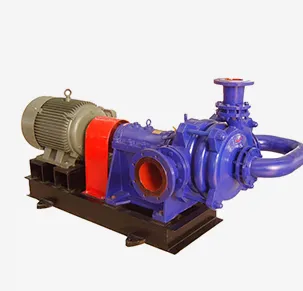English
- Afrikaans
- Albanian
- Amharic
- Arabic
- Armenian
- Azerbaijani
- Basque
- Belarusian
- Bengali
- Bosnian
- Bulgarian
- Catalan
- Cebuano
- Corsican
- Croatian
- Czech
- Danish
- Dutch
- English
- Esperanto
- Estonian
- Finnish
- French
- Frisian
- Galician
- Georgian
- German
- Greek
- Gujarati
- Haitian Creole
- hausa
- hawaiian
- Hebrew
- Hindi
- Miao
- Hungarian
- Icelandic
- igbo
- Indonesian
- irish
- Italian
- Japanese
- Javanese
- Kannada
- kazakh
- Khmer
- Rwandese
- Korean
- Kurdish
- Kyrgyz
- Lao
- Latin
- Latvian
- Lithuanian
- Luxembourgish
- Macedonian
- Malgashi
- Malay
- Malayalam
- Maltese
- Maori
- Marathi
- Mongolian
- Myanmar
- Nepali
- Norwegian
- Norwegian
- Occitan
- Pashto
- Persian
- Polish
- Portuguese
- Punjabi
- Romanian
- Russian
- Samoan
- Scottish Gaelic
- Serbian
- Sesotho
- Shona
- Sindhi
- Sinhala
- Slovak
- Slovenian
- Somali
- Spanish
- Sundanese
- Swahili
- Swedish
- Tagalog
- Tajik
- Tamil
- Tatar
- Telugu
- Thai
- Turkish
- Turkmen
- Ukrainian
- Urdu
- Uighur
- Uzbek
- Vietnamese
- Welsh
- Bantu
- Yiddish
- Yoruba
- Zulu
Telephone: +86 13120555503
Email: frank@cypump.com
Nov . 27, 2024 02:20 Back to list
Effective Strategies for Sewer System Pump-Out and Maintenance Solutions
Understanding Sewer System Pump Out Importance and Best Practices
Sewer systems serve as vital infrastructures in urban areas, designed to transport wastewater away from homes and businesses to treatment facilities. Among the critical components of these systems is the sewer pump-out process, which plays a significant role in maintaining the health and efficiency of the overall sanitation network. Understanding the importance of sewer pump-outs, how they work, and best practices can help ensure a clean and safe environment.
What is Sewer System Pump Out?
A sewer system pump-out involves the removal of accumulated sludge, waste, and other materials from sewage systems, particularly from septic tanks and similar systems. This process is essential to prevent clogs, backups, and overflows that can lead to environmental hazards and health risks. Sewage from homes flows to a collection point, where pumps move the liquid waste into treatment facilities. Over time, solids and sludge build up in these systems, necessitating regular pump-outs to maintain optimal functionality.
Importance of Regular Pump Outs
1. Preventing Back-ups and Overflows One of the primary reasons for regular sewer system pump-outs is to avoid the risk of sewage back-ups in homes and streets. Such occurrences can not only cause significant property damage but can also expose residents to harmful pathogens.
2. Maintaining System Efficiency Regular maintenance, including pump-outs, ensures that the sewer system operates efficiently. This involves reducing the strain on pumps and managing flow rates to avoid blockages, which can lead to costly repairs.
3. Environmental Protection Overflowing sewage can contaminate local waterways, leading to serious environmental consequences. By maintaining proper sewer system functions through regular pump-outs, communities can mitigate the risk of pollution and protect surrounding ecosystems.
4. Health and Safety Sewage systems harbor harmful bacteria and pathogens. Regularly scheduled pump-outs help in keeping these dangers at bay, ensuring the safety and health of the community.
sewer system pump out

Best Practices for Sewer Pump Outs
To optimize the sewer pump-out process, homeowners and municipal authorities should embrace several best practices
1. Regular Maintenance Schedule Establish a routine for pump-outs based on the system type and usage levels. For residential systems, this can typically range from every one to three years, depending on the household size and water usage.
2. Professional Inspections Hire licensed professionals to conduct regular inspections of the sewer system. They can identify potential issues such as cracks, leaks, or blockages that require immediate attention.
3. Educating Residents Public awareness campaigns about the dos and don’ts of what can go down the drain are vital. For instance, discouraging disposal of non-biodegradable items can significantly reduce the volume of waste in the sewer system.
4. Proper Disposal Methods Understand the waste disposal methods and avoid flushing items like diapers, wipes, and chemicals that can disrupt the sewer system’s functionality.
5. Utilizing Advanced Technologies Many modern sewer systems incorporate technologies such as sensors for real-time monitoring of sludge levels. This enables timely pump-outs based on necessity rather than a strict schedule, increasing efficiency and reducing costs.
Conclusion
Sewer system pump-out is a crucial element in maintaining public health, environmental safety, and the efficiency of wastewater management systems. Communities that prioritize routine maintenance, professional inspections, and public education are better positioned to manage their sewer infrastructure effectively. By understanding the implications of neglecting pump-outs, we can work collectively to ensure a sustainable and healthy environment for future generations.
-
ISG Series Vertical Pipeline Pump - Chi Yuan Pumps Co., LTD.|Advanced Hydraulic Design&Energy-Efficient Solutions
NewsJul.30,2025
-
ISG Series Vertical Pipeline Pump - Chi Yuan Pumps Co., LTD.
NewsJul.30,2025
-
ISG Series Vertical Pipeline Pump - Chi Yuan Pumps Co., LTD.|energy-efficient fluid handling&industrial durability
NewsJul.30,2025
-
ISG Series Vertical Pipeline Pump - Chi Yuan Pumps | Advanced Engineering&Industrial Efficiency
NewsJul.30,2025
-
ISG Series Pipeline Pump - Chi Yuan Pumps | High Efficiency, Energy Saving
NewsJul.30,2025
-
ISG Series Vertical Pipeline Pump-Chi Yuan Pumps|High Efficiency&Reliable Performance
NewsJul.29,2025










